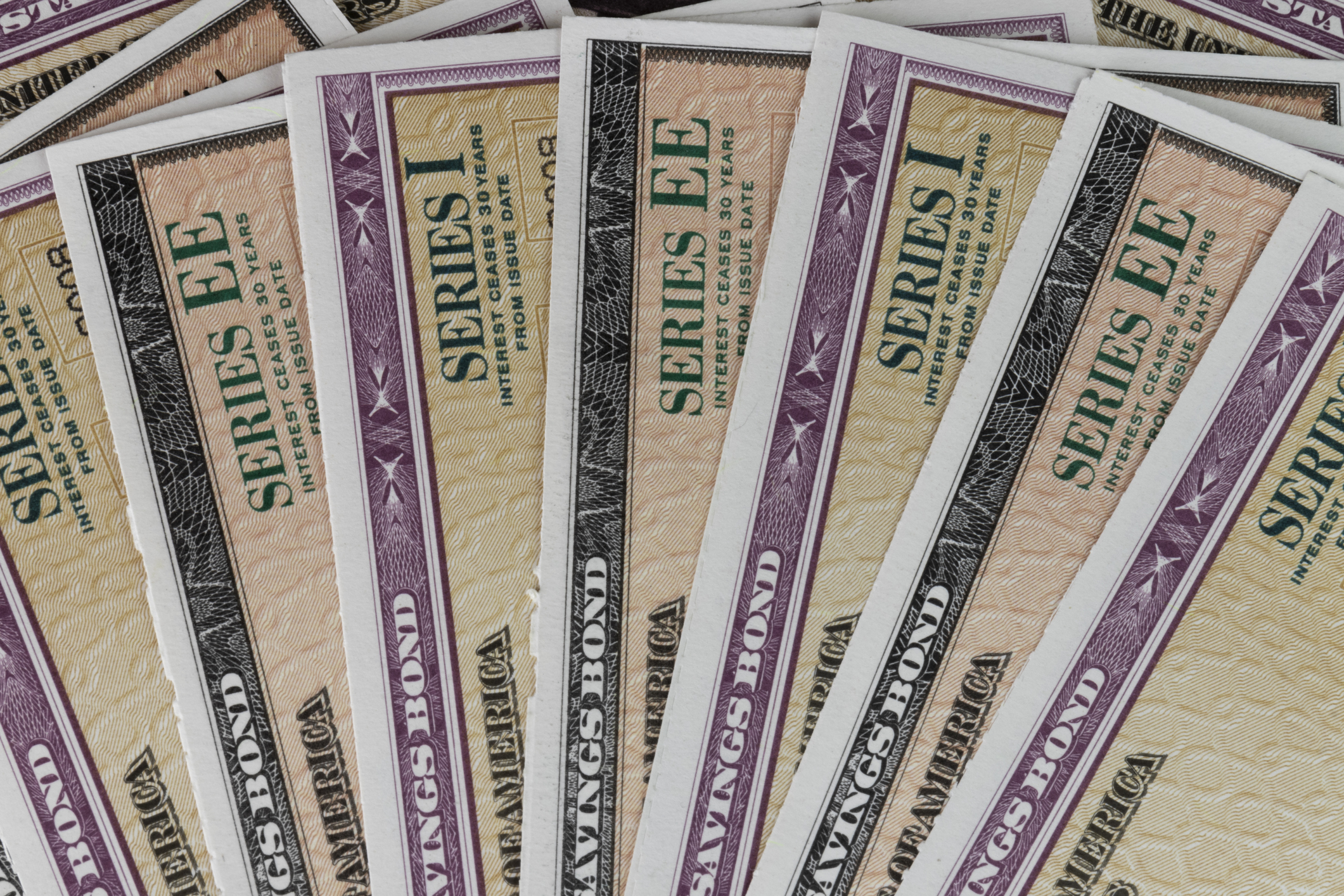The Benefits of I Bonds vs EE Bonds to Store Your Savings
All of the information you'll need to choose between Series I and EE savings bonds is right here.


Series I bonds and EE bonds are popular U.S. savings bonds that offer a safe way to save. Choosing between the two can be difficult.
The best place to start is to understand the terms of each bond and then to compare respective benefits and drawbacks.
Both bonds are solid investments that have minimal risk and virtually guarantee a return. You can’t go wrong in this situation. You can only do better.
From just $107.88 $24.99 for Kiplinger Personal Finance
Become a smarter, better informed investor. Subscribe from just $107.88 $24.99, plus get up to 4 Special Issues

Sign up for Kiplinger’s Free Newsletters
Profit and prosper with the best of expert advice on investing, taxes, retirement, personal finance and more - straight to your e-mail.
Profit and prosper with the best of expert advice - straight to your e-mail.
Since 2011, you could buy up to $5,000 in paper series I savings bonds (I-bonds) with your IRS tax refund each year.
As of January 1, 2025, I bonds are only available electronically, and this option is no longer available.
| Header Cell - Column 0 | I Bonds | EE-Bonds |
|---|---|---|
How to buy | From TreasuryDirect.gov only | From TreasuryDirect.gov only |
Interest rate | Two rates - a fixed rate and a variable rate | Rate when purchased is locked in for 20 years, It may be adjusted after 20 years |
| Row 2 - Cell 0 | The fixed rate is set on the date you buy the bond and remains the same for the entire term. The variable rate is adjusted for inflation twice a year | N/A |
Earns interest | Earned semi-yearly and added to the principal | Same |
Minimum per transaction | Electronic I-bonds: $25 minimum or any amount above that to the penny | Same |
Maximum purchase, per social security number | $10,000 per year of electronic bonds | $10,000 per year of electronic bonds. These are not sold as paper bonds |
Liquidity and Marketability | Can never be sold on the open market — only redeemed. Can’t be redeemed for the first year, and there’s a penalty (loss of last three months' worth of interest) for redeeming within the first five years | Same |
Tax treatment | Subject to federal income tax? Yes Subject to state and local income tax? No | Same |
Exclusion from federal income tax | You may not have to pay tax on the earnings if you use the money for qualified higher education expenses and you don't exceed the income limits | Same |
How to redeem | Access your TreasuryDirect account, go to ManageDirect and use the link for cashing in securities | Access your TreasuryDirect account, go to ManageDirect and use the link for cashing in securities |
I bonds
Benefits
- Inflation protection. One of the standout benefits of I bonds is the built-in inflation protection. Because part of the interest rate is adjusted semi-annually for inflation, it can help preserve the purchasing power of your investment.
- Flexibility. If inflation remains high, you can retain your bonds and profit. If inflation plummets, you can swap you securities for higher-paying conventional notes
Risks
- Modest returns in low inflation. In periods of low inflation, the returns can be modest. Since the interest rate of I bonds is partly tied to inflation, low inflation can result in lower yields.
- Variable interest rates are a risk you can't discount when you buy an I bond, and it's not like you can just sell the bond when the rate falls. You're locked in for the first year.
EE bonds
Benefits
- Guaranteed returns. One of the most attractive benefits of EE bonds is the guaranteed return. The U.S. Treasury pledges that these bonds will double in value if held for 20 years, translating to an effective interest rate of about 3.5% per year over that period.
- Stability: EE bonds offer a stable, predictable return, making them an excellent choice for conservative investors.
Risks
- Lack of inflation protection: The primary risk associated with EE bonds is the lack of protection against inflation. The fixed interest rate does not adjust for inflation, meaning that if inflation rises significantly, it can erode the purchasing power of the bond's return.
- Limited yield potential: EE bonds are a secure and low-risk investment, but they also come with lower returns than riskier investments such as stocks or mutual funds. Therefore, they may not be the best choice for those seeking higher returns and willing to accept higher risk.
These two investments are closely related
I bonds offer an inflation-protected return, ensuring your savings keep pace with rising costs.
EE bonds, on the other hand, provide a fixed-interest rate for the life of the bond, offering a predictable return.
Benefits of both I bonds and EE bonds:
Tax advantages. Both I bonds and EE bonds offer tax advantages, including federal tax deferral until the bond is redeemed or reaches maturity, and exemption from state and local taxes.
If used for educational expenses, they may be free from federal tax as well.
Safety: As a product of the U.S. Treasury, I and EE bonds come with a high degree of safety.
They are backed by the full faith and credit of the U.S. government, which significantly lowers the risk of default.
Risks of both I bonds and EE bonds:
Early redemption penalties: While you can cash in I and EE bonds after one year, if you do so within the first five years, you'll lose the last three months' interest.
This penalty can reduce your returns if you need to access your money early.
Limit on purchases: There's a limit on how much you can invest in I bonds and EE bonds each year.
Current interest rates
Interest rates for I and EE bonds reset every May and November. The last reset was May 1, 2025.
The current I-bond rate for those issued between May 1, 2025, and November 30, 2025, is 3.98%. This includes a fixed rate of 1.10%.
Although the new rates are announced in May and November, the date when the rate changes for your bond is every six months from the issue date of your bond.
EE bonds issued between May 1, 2025 and November 30, 2025, bear an interest rate of 2.70%.
They will earn that interest rate for the first 20 years you hold the bond and may be adjusted after 20 years.
Bottom line
I bonds, with their inflation-adjusted return, safeguard the investor's purchasing power during periods of high inflation.
On the other hand, EE Bonds offer predictable returns with a fixed-interest rate and a guaranteed doubling of value if held for 20 years.
Both share similar tax considerations, providing federal tax deferral and state and local tax exemption.
The fundamental difference between them is the variable inflation interest rate offered by I bonds and the guaranteed 20 year doubling for EE bonds.
I-bond investors enjoy great flexibility. If inflation remains high, they can retain their bonds and profit. If inflation plummets, they can swap their securities for higher-paying conventional notes.
Meanwhile, those who own EE bonds are stuck.
While I bonds can offer better protection in inflationary times, EE bonds offer stability even in volatile market conditions.
Their relevance in your portfolio varies with market conditions and personal investment goals.
Related Content
Profit and prosper with the best of Kiplinger's advice on investing, taxes, retirement, personal finance and much more. Delivered daily. Enter your email in the box and click Sign Me Up.

Donna joined Kiplinger as a personal finance writer in 2023. She spent more than a decade as the contributing editor of J.K.Lasser's Your Income Tax Guide and edited state specific legal treatises at ALM Media. She has shared her expertise as a guest on Bloomberg, CNN, Fox, NPR, CNBC and many other media outlets around the nation. She is a graduate of Brooklyn Law School and the University at Buffalo.
-
 How to Protect Yourself and Others From a Troubled Adult Child
How to Protect Yourself and Others From a Troubled Adult ChildThis case of a violent adult son whose parents are in denial is an example of the extreme risks some parents face if they neglect essential safety precautions.
-
 To Build Client Relationships That Last, Embrace Simplicity
To Build Client Relationships That Last, Embrace SimplicityAs more automation becomes the norm, you can distinguish yourself as a financial professional by using technology wisely and prioritizing personal touches.
-
 Client Demand Is Forcing Advisers to Specialize: How to Deliver
Client Demand Is Forcing Advisers to Specialize: How to DeliverThe complexity of wealthy clients' needs — combined with AI and consumer demand — suggests the future of financial planning belongs to specialized experts.